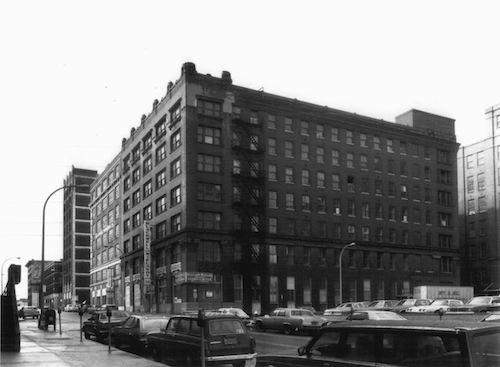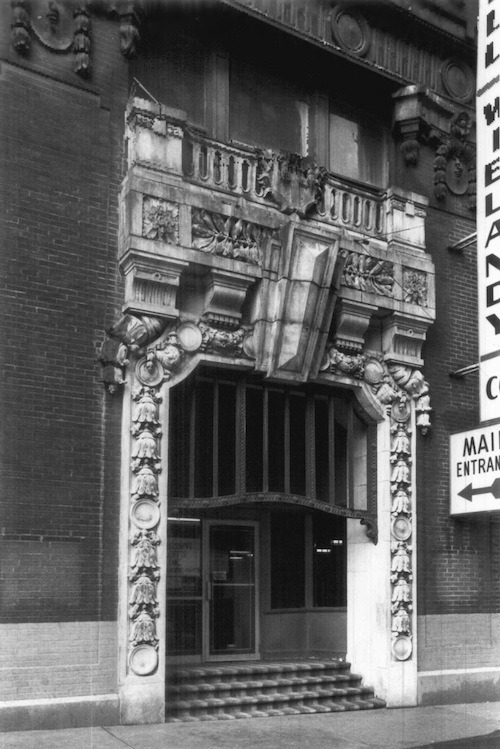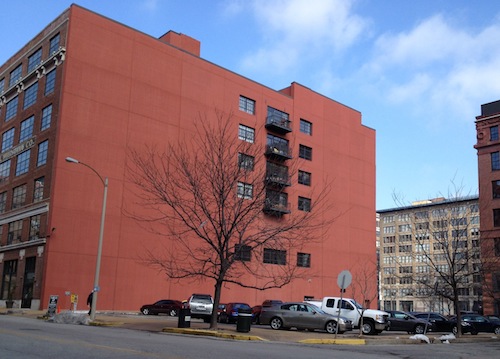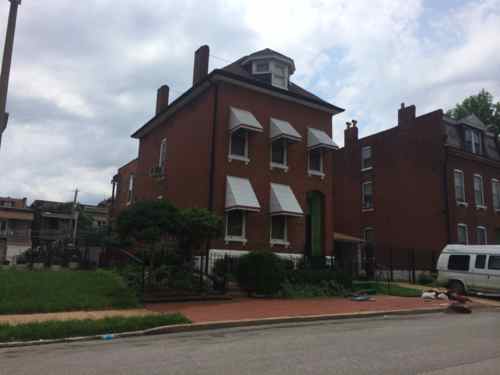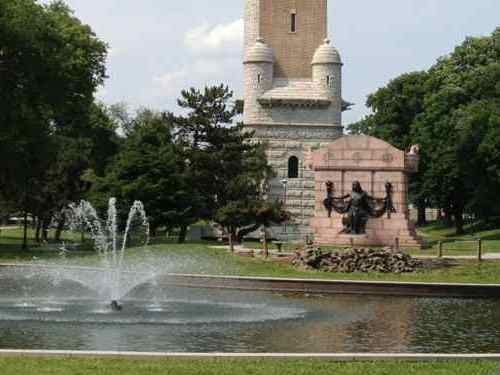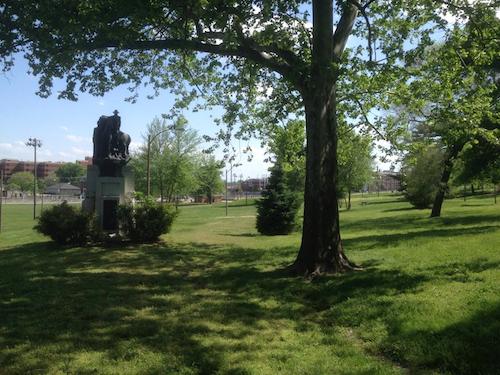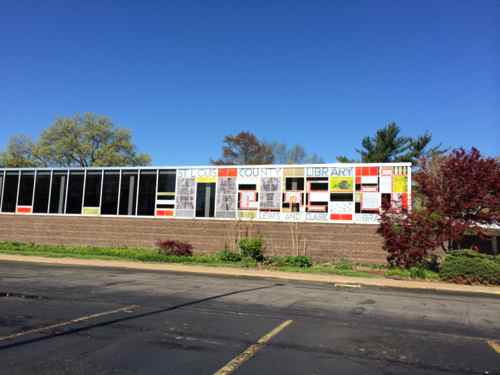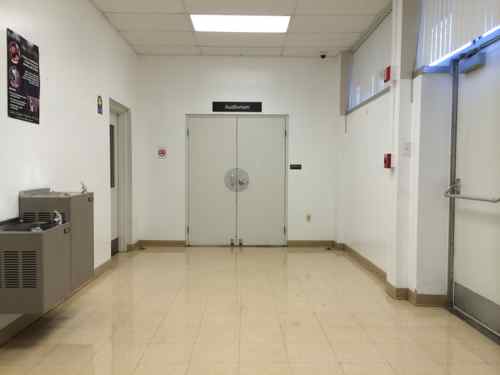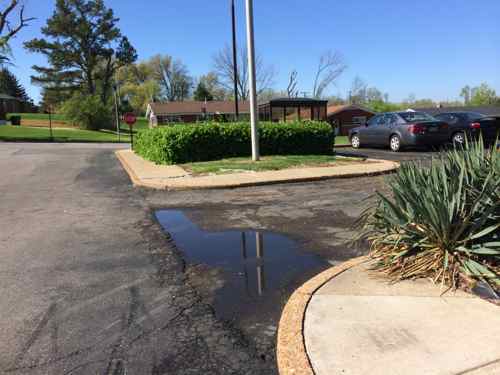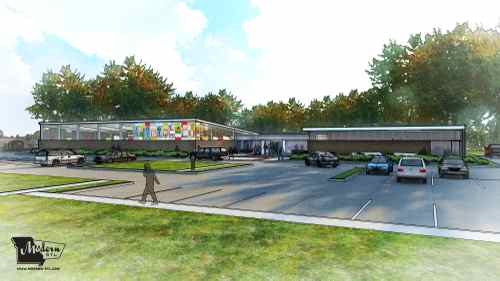Absentee Landlord Quickly Located Using Internet
This post is about an absentee landlord, how the city reacts to code violations, and a blogger stepping in to make change happen. I’d originally planned to post the property address and the name of the owner, but he responded to my letter, we’ve texted, talked on the phone, and emailed. Publicly embarrassing him would serve no purpose, at this point.
Twenty-four years ago tomorrow a prominent local family bought a property in the McKinley Heights neighborhood, they’ve been renting it all these years. The house is very attractive, and maintained. The carriage house, however, has been falling down for years, at least according to a neighbor. I viewed the carriage house from the alley, from the neighbor’s 2nd floor porch, and satellite images.
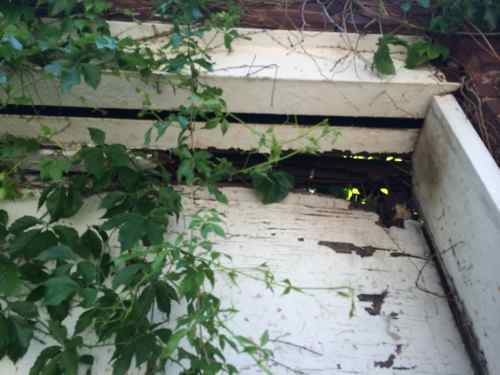
The flat roof has large holes, the floor to the 2nd floor no longer exists. When I emailed city officials to inquire about why this property was allowed to be in this condition, I’d been cited for much less. At the last minute in my email I added a sentence wondering if the owner’s last name is why ore if it was incompetence. I got called on that, and apologized. A couple of days later a reply comes from a staff member at the Building Division with a copy of the 2011 violation letter and a note saying the owner failed to contact them, failed to show up for housing court in 2011, and a bench warrant was issued for his arrest. Wow, so a prominent last name doesn’t get them off the hook!
I got involved and within a week had the owner talking to the building department about fixing the carriage house. My secret? The internet! The address of record for this property is the owner’s bank in suburban Ballwin, they pay the annual tax bill. However, it seems they discard all other correspondence sent by the city. I used the internet to find the owner’s home address, also in Ballwin. Before I’d heard back from the city about the violation letter and bench warrant, I’d mailed the owner a letter asking his intentions. I found his phone number online too, but chose to mail a letter knowing that would be less confrontational. He called me, we played phone tag a little before finally speaking. He had no idea about the 2011 violation letter, the missed housing court date, or the bench warrant.
I got his email address so I could forward to him what the city emailed me, along with contact information for the Building Division, Cultural Resources, and a link to the McKinley Heights Historic District Design Standards. I immediately replied to the city officials I’d been emailing with to fill them in on the discussion along with how to reach him. The very next night the Neighborhood Stabilization Officer (NSO) told the neighborhood meeting the bench warrant had been served. With a bench warrant the police don’t come looking for you, but get pulled over for speeding you’ll be taken in when they see it in the system.
The bench warrant wasn’t served, as told to the neighborhood, I used the internet to track down the property owner. Most likely everyone at city hall followed their procedures, mailing letters to the recorded address. Waiting and mailing more letters. It’s very clear the address is in care of a bank. Many property owners have the tax bill sent to an address other than their home, sometimes it is the property itself. When the city fails to get a response from the first letter mailed to such an address they need to try something new rather than mailing a court notice to the same address.
How many other properties are in the same situation because city staff haven’t searched online for the property owner? The staff may not be incompetent, but the official procedures are if they don’t include taking a half an hour to do some searching online.
— Steve Patterson
